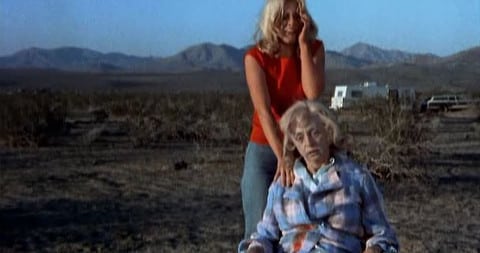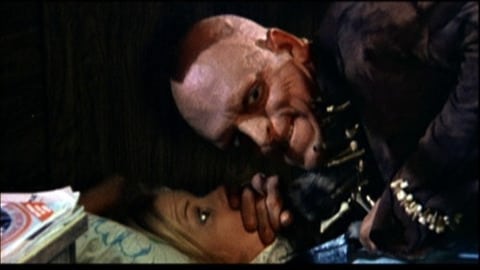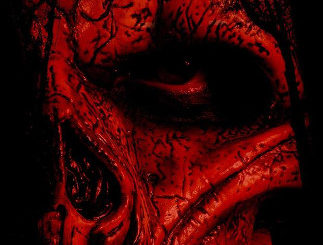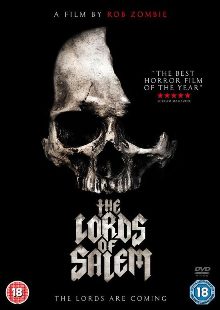The Hills Have Eyes (1977)
Directed by: Wes Craven
Written by: Wes Craven
Starring: Dee Wallace, Janus Blythe, Michael Berryman, Robert Houston
USA
ON BLU-RAY AND DVD: 3RD OCTOBER, from ARROW VIDEO
RUNNING TIME: 89 min
REVIEWED BY: Dr Lenera, Official HCF Critic
At a run-down gas station in the middle of the desert, a feral girl named Ruby is scolded by the owner Fred for what her family have done, before she tells him that his life will be danger if he tries to leave the area. Meanwhile the Carter family – Bob, Ethel are driving, their children Bobby, Brend and Lynne, Lynne’s husband Doug, their baby daughter Katie, and their dogs, Beauty and Beast – is travelling on vacation towing a travel trailer from Ohio to Los Angeles. They stop at Fred’s Oasis for fuel and Fred urges them to stay on the main road as they leave. Fred’s truck suddenly explodes, preventing him from leaving, and the Carters skid off a desert road and crash. Bob walks back to Fred’s Oasis to get help while Beauty runs off into the hills….where she’s slaughtered by someone….
Wes Craven’s melding of elements from The Texas Chainsaw Massacre [to the point of even using some props from that film!], Straw Dogs and Deliverance remains exciting, intriguing and vital, and a near perfect example of how low budget filmmaking aesthetics serve the horror genre so well. Compared to Alexandre Aja’s 2006 remake, which overall did surprise me in terms of its good quality, it really does seem very rough and raw and lacking in polish – and it’s precisely these qualities which will probably make the film still hold up and still be so effective to viewers when the remake has been all but forgotten about. Even things like poor acting and weak sound can, perhaps bizarrely, actually enhance the effect of a horror film and make it seem more real. The bridging film between Craven’s hugely controversial Last House On The Left and his softer, more popularist chillers he went on to make later, The Hills Have Eyes is in some ways more of a gripping survival thriller and a horrendously black comedy than a typical scary movie, and actually in my opinion it’s more successful, for the most part, in its build up rather than its action, but it still frightens and disturbs, partly because it’s really about us, and the savagery lurking beneath our civilised exterior.
It was conceived as a modern day retelling of the true story of Alexander “Sawney” Bean, who was the head of a 48-member clan in Scotland sometime between the 13th and 16th centuries, and who was reportedly executed for the mass murder and cannibalisation of over 1,000 people. Craven eventually realised that there was no way, especially after the fuss that Last House On The Left caused, that the forest-set treatment of a tale involving dozens of incestuous family members could be filmed. It was still a very cheap production, shot on cameras rented from a California pornographer, and with an audition process that largely hinged upon whether cast members could run well or not. When Craven shouted for the actresses auditioning for the role of Ruby to go, Janus Blythe stood behind for a moment, then took off and beat all the others to the finish line. Robert Houston was actually the second choice for Bobby Carter and landed the part because the original actor left the production after reading the script. Filming in the burning hot California desert locations was extremely rough on cast and crew and there were almost walkouts. Virginia Vincent’s reaction to being shot was quite genuine as there was a mishap with the squib planted under her robe. The film was a moderate commercial hit. Around a minute of violence and gore, including Jupiter thrusting Big Bob’s arm into his face and sticking its finger into his gore, was cut for an R’ rating, though the cuts for the final stabbing were snuck back in. The original UK cinema version lost part of the same scene plus the closeup shot of Pluto’s bloodied and mauled ankle., but the initial 1987 video release restored all of the previous cuts but lost two seconds of Mars pointing a gun at Brenda’s open mouth.
The Hills Have Eyes really has a superb opening title sequence as score composer Don Peake’s unsettling collage of instruments and sounds plays over a pan round a silhouetted desert landscape. Then the script does something quite interesting and introduces one of the cannibals in the opening scene – though I don’t think that Ruby ever actually eats people. The scene between Ruby and Fred the garage attendant does really well in establishing the threat of Ruby’s family in its dialogue while also making us have a bit of sympathy for this girl who just wants out. I used to think that Craven made a mistake in then showing the cannibals watching and talking way before they actually attack [though we don’t see the iconic face of Michael Berryman till nearly half way through], but it’s actually a clever device because, while it does show the threat to the Carter’s, it doesn’t actually show how horrible it’s going to be. This lot might just want to rob them, even after we’ve heard the disturbing background of the cannibals from Fred, who tells quite a heartbreaking, if also horrific, story, but a story which does sound rather exaggurated. Meanwhile, without overdoing it in the way that a modern horror film might do, we are shown cracks in the Carter family, cracks that have probably been there for some time, before it’s ripped apart for good. And gradually, things begin to happen to them, beginning with one of the dogs getting killed, a warning to sensitive viewers that this film isn’t going to mess about, and then, when Bob – a character who, being the father, one would reasonably think might survive the film or at least most of it – is set on fire, one is really on edge because nobody or nothing is safe.
The 1996 version moved the crucial scene where the cannibals break into the Carter’s caravan nearer to the beginning of the film, thereby being able to add more subsequent action, but it works better when it’s placed nearly half way through here, because Craven can build the tension more and more until it becomes almost unbearable. Though Last House on The Left had, and still has, a huge effect, The Hills Have Eyes shows that Craven’s skills as a filmmaker had improved considerably since that film, and in particular being able to now craft lengthy passages of suspense. He’s also able to make his movie feel as tough and uncompromising as possible without really dwelling on the gore, which seems to come naturally out of the story and its events rather than having the violent bits seem like set pieces. And he’s able to disturb in so many other ways, from having a baby kidnapped [babies being usually safe, even in these kinds of films – and would you believe it – its fate was originally going to be far worse than what we now see onscreen], to providing a brilliant twist on the usual shock moment of someone opening a door from the inside to find the monster standing outside by having a character open a door from the outside and be greeted by one of the cannibals who has invaded the Carter’s temporary home without anyone noticing, to giving the cannibals personality and even some humour, making us almost like these people even though they kill and torture and rape [a moment thankfully handled with some subtlety], without turning them into Freddy Krueger-type anti-heroes. Instead, they’re just reasonably rounded except for perhaps the mother, and this twisted, almost hippie-ish version of the nuclear [in more ways than one] family is far more disturbing than the more extreme creatures in the remake.
Some of the fights and chases in the latter half of the film don’t entirely convince and it’s easy to chuckle at the actions of the heroic Alsation. The film also ends really suddenly but, having seen the original ending which re-arranges some of the action and ends matters on a positive, triumphant note, Craven was wise to finish matters this way instead so we are left with the horror of what one of the surviving characters has become – a vicious brute little better than his opponents – yet it’s a very believable horror. This is civilised man confronted with the gradual stripping away of the trappings of civilisation – loss of wheels and mobility, loss of contact with the outside world, loss of food, loss of firepower, loss of life, loss of innocence – and he’s finally become a wild, animalistic savage. Imagine what he’d be like if he lived out in the wilderness for a whole year or so. He’ll probably be just like the mutants. The final kill scene showcases some very fine editing where, during the stabbing, each cut takes the killer’s face nearer the camera. Craven also edited the picture and fills it with creative and sometimes amusing cuts, like an edit from one dog barking and probably badly missing the the other dog to Ruby eating what is quite probably the other dog. And Eric Saarinen’s cinematography of what is little more than a small stretch of road makes the desert look about as forbidding as a desert has ever looked on film.
The acting….erm, well, it’s very good on the mutant side, with Michael Berrymore both scary and child-like as Pluto and Janus Blythe managing vulnerability at the same time as creepiness [she was originally offered Dee Wallace’s part but asked to do this one instead] as Ruby, who to me is possibly the most interesting character in the film, but it’s not so good on the human side, though never bad enough that you can’t relate to the characters or care for them. A somewhat unsung star of The Hills Have Eyes is composer Don Peak with his almost avant garde combining of natural sounds and instruments like a piano and violins. It’s very unsettling indeed and aids immensely in enhancing the film’s atmosphere. Most of the percussion sounds heard are actually the sounds of the bone and teeth necklaces worn by the actors in the film that are being played like instruments! I personally don’t think that The Hills Have Eyes is quite as good as its reputation – its first half is terrific but the second half slips slightly in places – but it’s still impressive, and, more than anything, reminds us that you don’t always need much at all to make a resonant and thrilling film that will become a classic. All this virtually minimalist work has is an extremely simple premise, a tiny area of the desert and a small group of performers – and it’s enough.
Arrow, probably because they’d ran out of Blu-ray screeners, sent us the DVD rather than the Blu-ray to review, but a quick comparison with my old Anchor Bay DVD revealed even the DVD to be a considerable improvement, with far brighter colours and a sharper picture, though being as it was shot in 16mm film, no amount of effort can The Hills Have Eyes look pristine, and I’m not sure I’d want it to – it would interfere with its ‘down’ and dirty aesthetic. The film can now be watched with the longer alternate ending, which is a nice addition. Arrow have ported over all the Anchor Bay extras except from a Wes Craven documentary, and have added two extra commentaries and a short featurette featuring Peake. The commentary with Craven and producer Peter Locke gives us all the background information one could wish for and Craven, as usual, seems like such a nice guy, and a witty one two. The track with four members of the cast, including Berryman, plus a moderator, sometimes repeats stuff heard in the ‘making of’ documentary but is still a fun listen. Funny how two of them hadn’t seen Last House On The Left before The Hills Have Eyes and that Berryman still hasn’t seen it! By contrast, the commentary with film writer Mikel J. Koven is academic and going chiefly into the film’s themes, but avoids becoming too dry even though it does seem obvious that Koven is reading from his notes!
SPECIAL FEATURES
*High Definition (1080p) presentation on Blu-Ray Edition
*Original mono audio
*Optional English subtitles for the deaf and hard of hearing
*6 x postcards (Blu-Ray only)
*Reversible fold-out poster featuring new and original artwork (Blu-Ray only)
*Limited edition booklet featuring new writing on the film by critic Brad Stevens and a consideration of the Hills franchise by Ewan Cant, illustrated with original archive stills (Blu-Ray only)
*Audio commentary with Wes Craven and producer Peter Locke
*Audio commentary with Cast
*Audio commentary with Mikel J. Koven
*Looking Back on The Hills Have Eyes making-of documentary featuring interviews with Craven, Locke, actors Michael Berryman, Dee Wallace, Janus Blythe, Robert Houston, Susan Lanier and director of photography Eric Saarinen
*The Desert Sessions brand new interview with composer Don Peake
*Alternate ending, in HD on the Blu-Ray edition for the first time
*Trailers and TV Spots
*Image Gallery
*Original Screenplay (BD/DVD-ROM Content)










I love all the additional content that arrow provides with their releases. They seem to be one of the surviving DVD manufacturers that still care haha.
The lucky ones die first
I love the scream sequence of movies, horror with a touch of comedy with it.